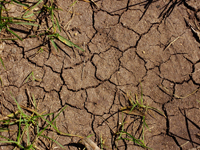The European Crisis and its Possible Impacts in Latin America and the Caribbean The crisis in Europe could affect Latin American and Caribbean economies through trade and finances. The scope and intensity of these effects will depend on the duration and magnitude of the European debt crisis. Read More> |
 Demonstration in Madrid, Spain, 2010 Photo: Flickr, Olmovich |
|
||||||||||||||||||||||||||||||
|
Over 60% of Lands in Some Countries
could be Degraded |

|
|||||||||||||||||||||||||||||||
| IN FOCUS | ||||||||||||||||||||||||||||||||
|
||||||||||||||||||||||||||||||||



